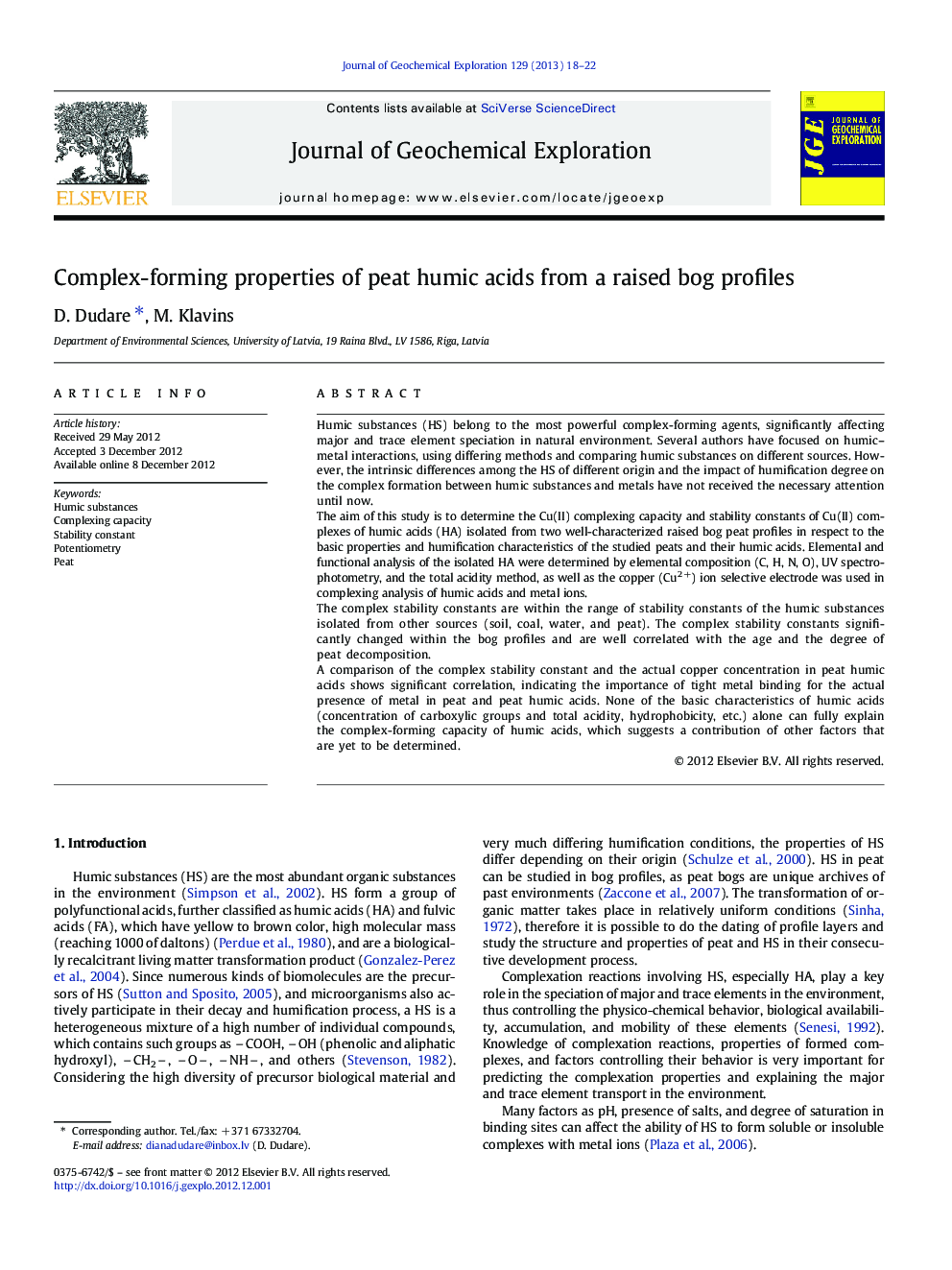| Article ID | Journal | Published Year | Pages | File Type |
|---|---|---|---|---|
| 4457586 | Journal of Geochemical Exploration | 2013 | 5 Pages |
Humic substances (HS) belong to the most powerful complex-forming agents, significantly affecting major and trace element speciation in natural environment. Several authors have focused on humic–metal interactions, using differing methods and comparing humic substances on different sources. However, the intrinsic differences among the HS of different origin and the impact of humification degree on the complex formation between humic substances and metals have not received the necessary attention until now.The aim of this study is to determine the Cu(II) complexing capacity and stability constants of Cu(II) complexes of humic acids (HA) isolated from two well-characterized raised bog peat profiles in respect to the basic properties and humification characteristics of the studied peats and their humic acids. Elemental and functional analysis of the isolated HA were determined by elemental composition (C, H, N, O), UV spectrophotometry, and the total acidity method, as well as the copper (Cu2 +) ion selective electrode was used in complexing analysis of humic acids and metal ions.The complex stability constants are within the range of stability constants of the humic substances isolated from other sources (soil, coal, water, and peat). The complex stability constants significantly changed within the bog profiles and are well correlated with the age and the degree of peat decomposition.A comparison of the complex stability constant and the actual copper concentration in peat humic acids shows significant correlation, indicating the importance of tight metal binding for the actual presence of metal in peat and peat humic acids. None of the basic characteristics of humic acids (concentration of carboxylic groups and total acidity, hydrophobicity, etc.) alone can fully explain the complex-forming capacity of humic acids, which suggests a contribution of other factors that are yet to be determined.
► Botanical composition of peat sets the complex forming properties of humic acids. ► Peat HA–metal stability constants correlate with peat age and decomposition degree. ► The values of the obtained logK range from 4.06 to 5.73. ► Peat humic acids determine the actual presence of metal concentration in peat.
